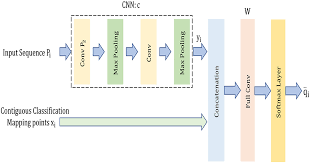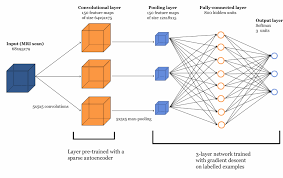In the realm of artificial intelligence and machine learning, segmentation neural networks have emerged as a powerful tool for image analysis and computer vision tasks. These sophisticated networks are designed to partition an image into meaningful segments or regions, enabling computers to understand and interpret visual data with remarkable precision.
Segmentation neural networks operate by assigning a specific label or category to each pixel in an image, based on its characteristics and context within the overall scene. By segmenting an image into distinct parts, these networks can identify objects, boundaries, textures, and other visual elements, facilitating tasks such as object detection, image recognition, and semantic segmentation.
One of the key advantages of segmentation neural networks is their ability to capture fine-grained details and nuances in visual data. Unlike traditional classification models that assign a single label to an entire image, segmentation networks provide a pixel-level understanding of the scene, allowing for more precise analysis and decision-making.
There are several types of segmentation neural networks, including semantic segmentation networks that classify each pixel into predefined categories (e.g., person, car, tree), instance segmentation networks that differentiate between individual instances of objects within the same category, and panoptic segmentation networks that combine both semantic and instance segmentation for comprehensive scene understanding.
Segmentation neural networks have found applications in various fields such as autonomous driving, medical imaging, satellite imagery analysis, augmented reality, and more. Their ability to extract detailed information from images has opened up new possibilities for enhancing visual perception and enabling intelligent systems to interpret the world around them.
As research in deep learning continues to advance, we can expect further developments in segmentation neural networks that improve accuracy, efficiency, and generalization across diverse datasets. With their transformative capabilities in image analysis and computer vision tasks, these networks are poised to play a crucial role in shaping the future of AI-powered technologies.
6 Essential Tips for Optimizing Segmentation Neural Networks
- Preprocess data by normalizing and standardizing input features.
- Use techniques like dropout and batch normalization to prevent overfitting.
- Split dataset into training, validation, and test sets for model evaluation.
- Experiment with different network architectures to find the most suitable one.
- Monitor training process using metrics like loss and accuracy for optimization.
- Fine-tune hyperparameters such as learning rate to improve model performance.
Preprocess data by normalizing and standardizing input features.
To enhance the performance and effectiveness of a segmentation neural network, it is crucial to preprocess the data by normalizing and standardizing input features. Normalization involves scaling the input data to a consistent range, typically between 0 and 1, to ensure that all features contribute equally to the network’s learning process. Standardization, on the other hand, involves transforming the data to have a mean of 0 and a standard deviation of 1, which helps in stabilizing training and improving convergence speed. By applying these preprocessing techniques, the neural network can better handle variations in data distribution, leading to more robust and accurate segmentation results.
Use techniques like dropout and batch normalization to prevent overfitting.
When working with segmentation neural networks, it is essential to incorporate techniques like dropout and batch normalization to prevent overfitting. Dropout is a regularization method that randomly disables a fraction of neurons during training, which helps prevent the network from relying too heavily on specific features or patterns in the data. On the other hand, batch normalization normalizes the input of each layer, making training more stable and reducing the likelihood of overfitting by controlling internal covariate shift. By implementing these techniques, practitioners can improve the generalization capability of segmentation neural networks and enhance their performance on diverse datasets.
Split dataset into training, validation, and test sets for model evaluation.
When working with a segmentation neural network, it is essential to split your dataset into training, validation, and test sets to ensure reliable model evaluation. By dividing the data in this way, you can train the network on the training set, fine-tune its performance on the validation set, and finally assess its accuracy and generalization capabilities on the test set. This approach helps prevent overfitting, allows for unbiased model evaluation, and enables you to make informed decisions about the network’s effectiveness in segmenting images accurately and efficiently. Proper dataset splitting is a fundamental step in ensuring the robustness and reliability of your segmentation neural network model.
Experiment with different network architectures to find the most suitable one.
When working with segmentation neural networks, it is essential to experiment with different network architectures to determine the most suitable one for your specific task. By exploring a variety of architectures, you can gain valuable insights into how different models perform in terms of accuracy, efficiency, and robustness. This iterative process of experimentation allows you to fine-tune the network design to better meet the requirements of your segmentation task, ultimately leading to improved performance and results.
Monitor training process using metrics like loss and accuracy for optimization.
Monitoring the training process of a segmentation neural network is crucial for optimizing its performance. By tracking metrics such as loss and accuracy during training, developers can gain valuable insights into how well the network is learning and adjusting to the data. Loss metrics indicate the difference between predicted and actual values, guiding adjustments to improve model accuracy. Accuracy metrics, on the other hand, measure the network’s ability to correctly classify pixels in segmented regions. By continuously evaluating these metrics throughout training, developers can fine-tune the network’s parameters and architecture to achieve optimal segmentation results.
Fine-tune hyperparameters such as learning rate to improve model performance.
To enhance the performance of a segmentation neural network, it is crucial to fine-tune hyperparameters like the learning rate. Adjusting the learning rate can significantly impact how quickly and effectively the model converges during training, ultimately influencing its accuracy and generalization capabilities. By carefully optimizing hyperparameters based on the specific characteristics of the dataset and model architecture, researchers and practitioners can maximize the segmentation network’s performance and achieve superior results in image analysis and computer vision tasks.




